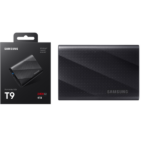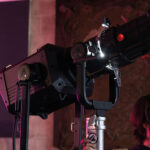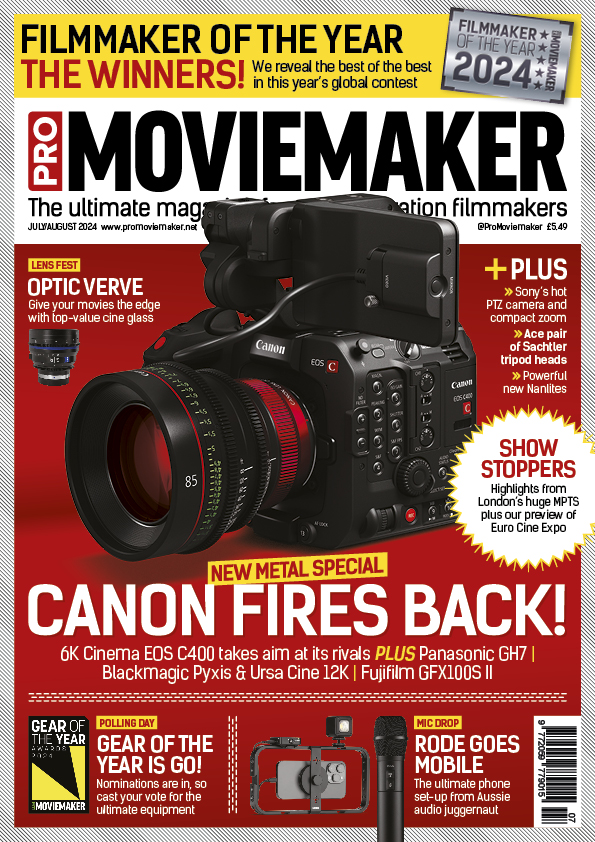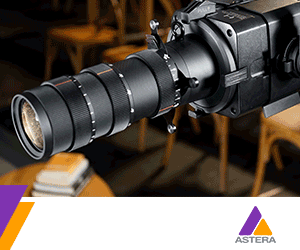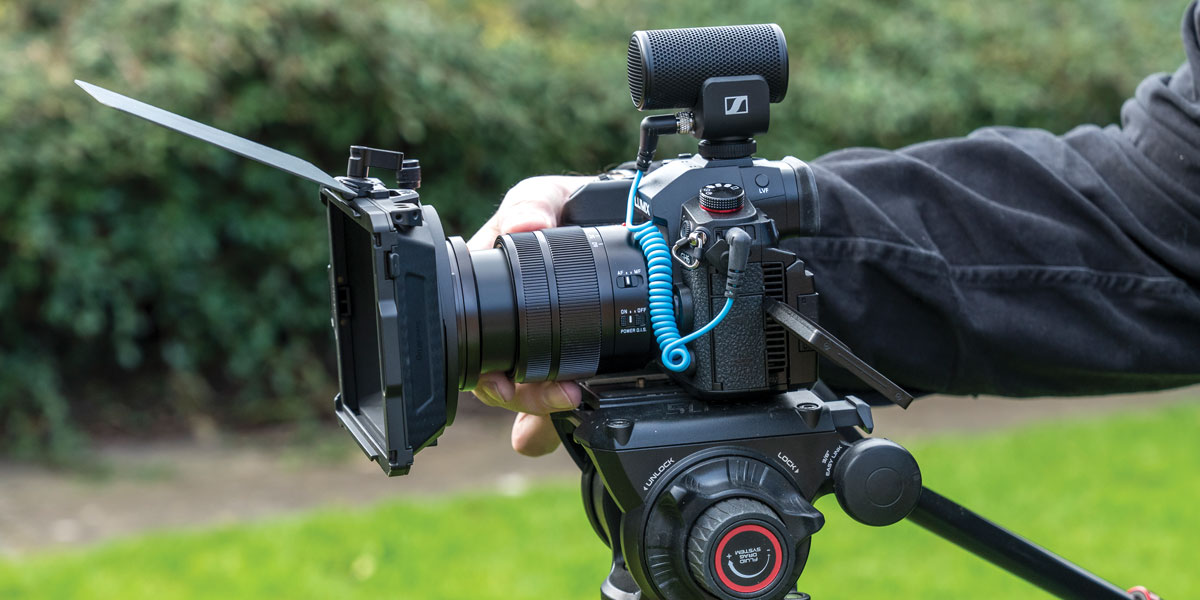
Lighten your load with MPB
Posted on Oct 7, 2023 by Samara Husbands
When it’s time to travel, a lighter set-up is ideal and can be very affordable thanks to MPB
Advertisement feature
It’s the most wonderful time of the year – to get out and about and shoot the golden light and incredible views. The kids are going back to school, the tourists are thinning out – yet there is still glorious colour and light before autumn takes hold. It’s the ideal time to get on your travels and shoot everything from stock footage to commercial projects.
It’s rare nowadays for indie filmmakers to have the funds to take loads of people or cases of kit with them. It’s best to travel light and choose equipment wisely. If you usually shoot on a fully rigged cinema camera and prime lenses, maybe it’s time to try something like a hybrid or mirrorless. Of if you’re an ENG shooter with a hefty camcorder, perhaps a smaller version would be easier to transport – and let you get away with filming in places a full rig might attract unwanted attention.
The best way to get hold of gear like this is to buy it used from a reputable dealer. You know you’re saving money, and you’re getting equipment that’s been tested, so won’t let you down. And MPB has by far the biggest choice of used kit, which is crucial when looking for a specific item or brand of product. But what should you buy to guarantee saleable results?
The hybrid heroes
If you’re used to a rigged-up cine camera with a vast choice of codecs, lots of inputs/outputs and great audio, but want something smaller, check out the growing range of hybrid cameras. These are cameras that use mirrorless technology – with large sensors – but have more video-centric features. Three of the most obvious candidates are the Sony FX3, its newer FX30 sibling and the Canon EOS C70.
If you demand full-frame for the unique look, then the FX3 is the one to go for as the other two use Super 35 sensors. But don’t write them off as being any less capable, the extra reach due to the crop sensor means you can use smaller lenses to get the same effect. That could cut down on your excess baggage.
The FX3 is in more plentiful supply used and is a staggeringly good performer in low light thanks to its modest 12-megapixel sensor that shoots 4K in 10-bit 4:2:2. MPB also has decent stocks of the newer FX30, which can be thought of as a crop-sensor version as they share the same body design. The FX30 has its own 26-megapixel APS-C sensor and is cheaper than the FX3, but omits a mechanical shutter.
Both cameras are built for shooting video in a 17:9 crop of the sensor, with a 3:2 stills capability bolted on. For stills, the FX30 has no AF tracking or continuous burst shooting, but the FX3 does. Neither has an EVF though.
The bodies of both cameras have five 1/4in threaded mounting holes for accessories, and the MI shoe is ideal for audio equipment to take power and connect without cables. The cameras have built-in cooling fans to stop overheating and zoom rocker switches for controlling power zoom lenses.
Both have a massive choice of codecs and frame rates, up to 4K in 10-bit 4:2:2. The full-frame FX3 has about a stop more dynamic range and better low-light performance, but both are great buys.
For Canon fans, the EOS C70 has a unique body and traditional Super 35 sensor, and it was the first of Canon’s Cinema EOS line to use the intelligent tracking and autofocus system seen in the EOS R5.
To stop the shakes, the C70 uses the Optical IS in RF lenses and the digital IS in the camera body, which gives a slight crop. The body has a multi-function hand grip and professional input/output connections, including HDMI and two mini XLR terminals for audio. There’s no viewfinder, but it has traditional audio controls behind the flip-out, articulating touchscreen, and there are big cooling vents to stop overheating. The screen shows waveforms, vectorscope, false colour, zebras and focus peaking. The body has a full-size HDMI connection, timecode and two mini-XLR terminals for audio, as well as a 3.5mm audio-in jack.
Magnificent mirrorless
If you need top-notch stills and video from one camera, then there are lots of lightweight mirrorless options to choose from. Panasonic has always been a pioneer of great video spec on small cameras, and the GH6 continues that thanks to its Micro Four Thirds sensor. It has a 25.2-megapixel sensor, dual-gain output and codecs including 4:2:2 10-bit options, as well as Apple ProRes 422 and 422HQ recorded to the camera’s CFexpress card.
There’s a built-in fan so you can record 5.7K ProRes without overheating. It also shoots C4K/60p in 4:2:2 10-bit All-Intra and Long GOP, and can be used up to C4K/120p for super slow-motion, though the codec drops to 4:2:0 10-bit. It’s a lightweight that packs a heavy punch.
For Canon users, the EOS R5 shoots 8K, and you can even grab 35-megapixel stills from the video footage. Shooting in 8K does limit the available frame-rate choices – not to mention the run time before overheating kicks in – so you’re better off using the 4K setting that down-samples from 8K for super-detailed, stunning footage. It’ll even shoot 4K/120p. But unlike its full-frame mirrorless rivals with no recording limits, the Canon still has that 30-minute maximum recording time on all files.
It is also designed as an incredibly good stills camera, with stunning 45-megapixel resolution. And as it’s been out for a couple of years, used stock at MPB is good. At the time of writing, there were 27 in stock.
If you want a Sony-mount camera, then also check out the A7 III, or for crop-sensor Fujifilm fans, the XT-4 is a stunner. MPB has plenty of each to choose from.
Whole in one
For news shooters who love an all-in-one camcorder but don’t want to lug a Canon XF705 around the globe, there are decent choices that won’t break the bank.
For around a grand or less, take a look at the Canon XC15 or XA20, and the Panasonic HC-X1. Starting with the Panasonic, it shoots DCI 4K and has a 20x optical zoom that starts from a wide 24mm equivalent and extends out to 480mm.
If you’re OK shooting HD, the Canon XA20 is a very compact camera that features a 1/2.84-inch CMOS sensor that captures video up to 59.94p, including a 24p mode for a more cinematic feel. The 20x optical zoom lens has a 35mm equivalent range of 26.8-576mm and features an eight-bladed iris.
For something with a very different style of body, the Canon 4K XC15 has a unique form factor that looks more like an oversized DSLR, but comes with all the attachments needed to build it into a classic fixed-lens camcorder set-up.
When choosing a camera for your next adventure, remember that MPB also has vast and varied stocks of pre-owned drones and action cameras, to really help you take your productions onto new heights. Happy travels!
Originally published in the September/October 2023 issue of Pro Moviemaker.


